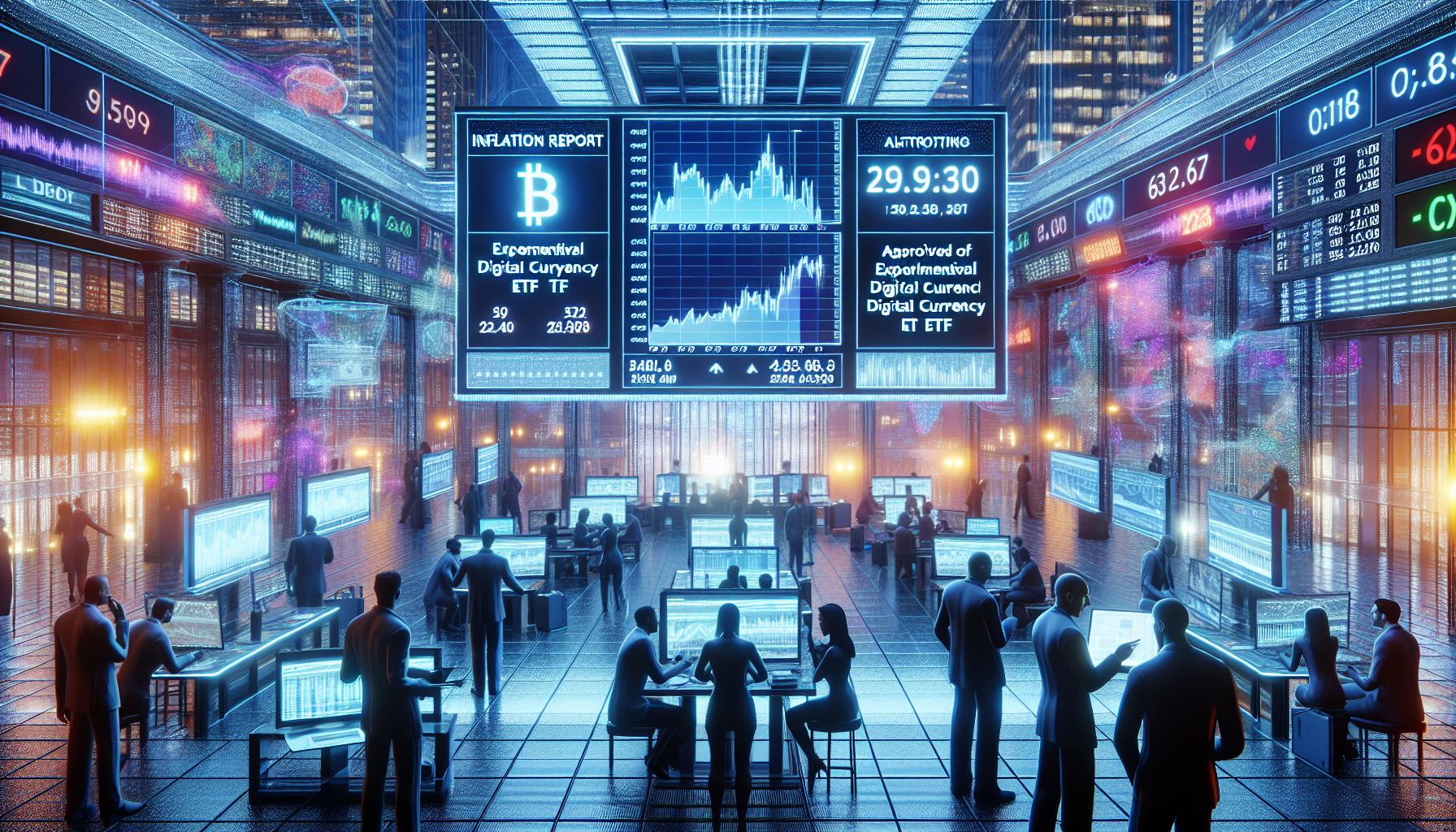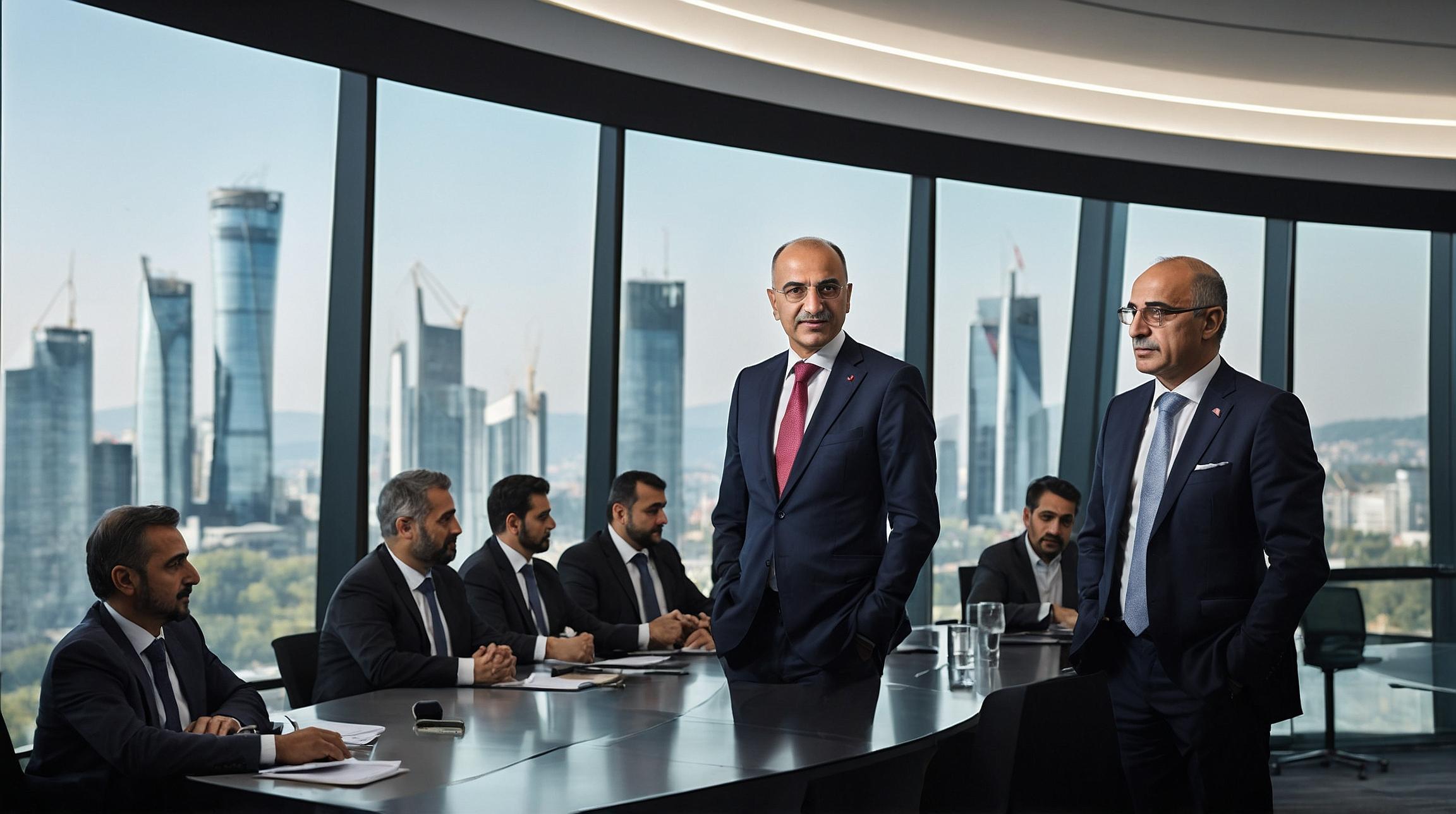Former OpenAI executive Zack Kass, author of The Next Renaissance: AI and the Expansion of Human Potential, supports early public deployment of powerful AI technologies despite inherent risks. He argues that transparency and public use accelerate collective adaptation and innovation. !-- wp:paragraph -->
“If we have a groundbreaking technology, I think people should know about it and use it so that we can all update to it,” Kass told CNBC.FinOracleAI — Market View
OpenAI’s Sora 2 launch highlights the accelerating integration of AI into multimedia content creation, signaling a pivotal shift in how digital media is produced and consumed. While the app’s viral success demonstrates strong market demand, the ongoing debate around content moderation underscores the complex challenges of deploying powerful AI tools responsibly. !-- wp:paragraph -->- Opportunities: Rapid user engagement growth, expansion of AI video synthesis capabilities, and leadership positioning in emerging AI content markets.
- Risks: Potential legal challenges over copyrighted content use, reputational damage from misuse or harmful deepfakes, and regulatory scrutiny on AI-generated media.
Impact: OpenAI’s strategic focus on innovation balanced with evolving safety measures will be critical to sustaining its market leadership while managing ethical and legal risks associated with AI-generated video content.
Leading video synthesis expert Professor Hao Li explained that most AI models today primarily train on linguistic data. To achieve artificial general intelligence, models must learn from visual and audio inputs, mirroring how humans acquire knowledge. His lab uses AI-generated videos to enhance model capabilities through synthetic data feedback. !-- wp:paragraph -->“We use AI to generate content to then train another model to perform better,” said Li, emphasizing the role of video generation in advancing AI reasoning. Former OpenAI executive Zack Kass, author of The Next Renaissance: AI and the Expansion of Human Potential, supports early public deployment of powerful AI technologies despite inherent risks. He argues that transparency and public use accelerate collective adaptation and innovation.
!-- wp:paragraph -->“If we have a groundbreaking technology, I think people should know about it and use it so that we can all update to it,” Kass told CNBC.FinOracleAI — Market View
OpenAI’s Sora 2 launch highlights the accelerating integration of AI into multimedia content creation, signaling a pivotal shift in how digital media is produced and consumed. While the app’s viral success demonstrates strong market demand, the ongoing debate around content moderation underscores the complex challenges of deploying powerful AI tools responsibly. !-- wp:paragraph -->- Opportunities: Rapid user engagement growth, expansion of AI video synthesis capabilities, and leadership positioning in emerging AI content markets.
- Risks: Potential legal challenges over copyrighted content use, reputational damage from misuse or harmful deepfakes, and regulatory scrutiny on AI-generated media.
Impact: OpenAI’s strategic focus on innovation balanced with evolving safety measures will be critical to sustaining its market leadership while managing ethical and legal risks associated with AI-generated video content.
OpenAI’s Sora 2 launch occurs amid escalating competition from major tech players. Meta recently introduced Vibes, a short-form AI video feed within its Meta AI app. Google has rolled out Veo 3, while ByteDance and Alibaba have also introduced rival AI video systems. OpenAI’s commitment to an $850 billion investment in infrastructure and next-generation models underscores its determination to maintain leadership in the AI space. !-- wp:paragraph -->Expert Perspectives on AI-Generated Video and Model Training
Leading video synthesis expert Professor Hao Li explained that most AI models today primarily train on linguistic data. To achieve artificial general intelligence, models must learn from visual and audio inputs, mirroring how humans acquire knowledge. His lab uses AI-generated videos to enhance model capabilities through synthetic data feedback. !-- wp:paragraph -->“We use AI to generate content to then train another model to perform better,” said Li, emphasizing the role of video generation in advancing AI reasoning. Former OpenAI executive Zack Kass, author of The Next Renaissance: AI and the Expansion of Human Potential, supports early public deployment of powerful AI technologies despite inherent risks. He argues that transparency and public use accelerate collective adaptation and innovation.
!-- wp:paragraph -->“If we have a groundbreaking technology, I think people should know about it and use it so that we can all update to it,” Kass told CNBC.FinOracleAI — Market View
OpenAI’s Sora 2 launch highlights the accelerating integration of AI into multimedia content creation, signaling a pivotal shift in how digital media is produced and consumed. While the app’s viral success demonstrates strong market demand, the ongoing debate around content moderation underscores the complex challenges of deploying powerful AI tools responsibly. !-- wp:paragraph -->- Opportunities: Rapid user engagement growth, expansion of AI video synthesis capabilities, and leadership positioning in emerging AI content markets.
- Risks: Potential legal challenges over copyrighted content use, reputational damage from misuse or harmful deepfakes, and regulatory scrutiny on AI-generated media.
Impact: OpenAI’s strategic focus on innovation balanced with evolving safety measures will be critical to sustaining its market leadership while managing ethical and legal risks associated with AI-generated video content.
Sora 2 represents a significant upgrade over its predecessor, generating longer, more coherent, and highly realistic video clips. The app incorporates multiple layers of safeguards designed to block unsafe content, including prompt filtering and output moderation across video frames and audio transcripts. It prohibits explicit content, terrorist propaganda, self-harm promotion, and likeness impersonation, additionally embedding watermarks to identify AI-generated videos. !-- wp:paragraph --> Nonetheless, some users have circumvented these protections, producing content that challenges OpenAI’s guardrails. Viral videos featuring Altman’s likeness—used with his permission—as well as unsettling portrayals of popular characters like Pikachu and SpongeBob SquarePants, have intensified scrutiny of the company’s content policies. !-- wp:paragraph -->Rising Competition in AI Video Generation
OpenAI’s Sora 2 launch occurs amid escalating competition from major tech players. Meta recently introduced Vibes, a short-form AI video feed within its Meta AI app. Google has rolled out Veo 3, while ByteDance and Alibaba have also introduced rival AI video systems. OpenAI’s commitment to an $850 billion investment in infrastructure and next-generation models underscores its determination to maintain leadership in the AI space. !-- wp:paragraph -->Expert Perspectives on AI-Generated Video and Model Training
Leading video synthesis expert Professor Hao Li explained that most AI models today primarily train on linguistic data. To achieve artificial general intelligence, models must learn from visual and audio inputs, mirroring how humans acquire knowledge. His lab uses AI-generated videos to enhance model capabilities through synthetic data feedback. !-- wp:paragraph -->“We use AI to generate content to then train another model to perform better,” said Li, emphasizing the role of video generation in advancing AI reasoning. Former OpenAI executive Zack Kass, author of The Next Renaissance: AI and the Expansion of Human Potential, supports early public deployment of powerful AI technologies despite inherent risks. He argues that transparency and public use accelerate collective adaptation and innovation.
!-- wp:paragraph -->“If we have a groundbreaking technology, I think people should know about it and use it so that we can all update to it,” Kass told CNBC.FinOracleAI — Market View
OpenAI’s Sora 2 launch highlights the accelerating integration of AI into multimedia content creation, signaling a pivotal shift in how digital media is produced and consumed. While the app’s viral success demonstrates strong market demand, the ongoing debate around content moderation underscores the complex challenges of deploying powerful AI tools responsibly. !-- wp:paragraph -->- Opportunities: Rapid user engagement growth, expansion of AI video synthesis capabilities, and leadership positioning in emerging AI content markets.
- Risks: Potential legal challenges over copyrighted content use, reputational damage from misuse or harmful deepfakes, and regulatory scrutiny on AI-generated media.
Impact: OpenAI’s strategic focus on innovation balanced with evolving safety measures will be critical to sustaining its market leadership while managing ethical and legal risks associated with AI-generated video content.
Sora 2 represents a significant upgrade over its predecessor, generating longer, more coherent, and highly realistic video clips. The app incorporates multiple layers of safeguards designed to block unsafe content, including prompt filtering and output moderation across video frames and audio transcripts. It prohibits explicit content, terrorist propaganda, self-harm promotion, and likeness impersonation, additionally embedding watermarks to identify AI-generated videos. !-- wp:paragraph --> Nonetheless, some users have circumvented these protections, producing content that challenges OpenAI’s guardrails. Viral videos featuring Altman’s likeness—used with his permission—as well as unsettling portrayals of popular characters like Pikachu and SpongeBob SquarePants, have intensified scrutiny of the company’s content policies. !-- wp:paragraph -->Rising Competition in AI Video Generation
OpenAI’s Sora 2 launch occurs amid escalating competition from major tech players. Meta recently introduced Vibes, a short-form AI video feed within its Meta AI app. Google has rolled out Veo 3, while ByteDance and Alibaba have also introduced rival AI video systems. OpenAI’s commitment to an $850 billion investment in infrastructure and next-generation models underscores its determination to maintain leadership in the AI space. !-- wp:paragraph -->Expert Perspectives on AI-Generated Video and Model Training
Leading video synthesis expert Professor Hao Li explained that most AI models today primarily train on linguistic data. To achieve artificial general intelligence, models must learn from visual and audio inputs, mirroring how humans acquire knowledge. His lab uses AI-generated videos to enhance model capabilities through synthetic data feedback. !-- wp:paragraph -->“We use AI to generate content to then train another model to perform better,” said Li, emphasizing the role of video generation in advancing AI reasoning. Former OpenAI executive Zack Kass, author of The Next Renaissance: AI and the Expansion of Human Potential, supports early public deployment of powerful AI technologies despite inherent risks. He argues that transparency and public use accelerate collective adaptation and innovation.
!-- wp:paragraph -->“If we have a groundbreaking technology, I think people should know about it and use it so that we can all update to it,” Kass told CNBC.FinOracleAI — Market View
OpenAI’s Sora 2 launch highlights the accelerating integration of AI into multimedia content creation, signaling a pivotal shift in how digital media is produced and consumed. While the app’s viral success demonstrates strong market demand, the ongoing debate around content moderation underscores the complex challenges of deploying powerful AI tools responsibly. !-- wp:paragraph -->- Opportunities: Rapid user engagement growth, expansion of AI video synthesis capabilities, and leadership positioning in emerging AI content markets.
- Risks: Potential legal challenges over copyrighted content use, reputational damage from misuse or harmful deepfakes, and regulatory scrutiny on AI-generated media.
Impact: OpenAI’s strategic focus on innovation balanced with evolving safety measures will be critical to sustaining its market leadership while managing ethical and legal risks associated with AI-generated video content.
Within OpenAI, the Sora 2 release has revived a longstanding debate on how to strike the right balance between safeguarding users and fostering creative expression. Company leadership emphasizes the necessity of strict guardrails to prevent misuse but remains wary of over-censorship that could stifle innovation or alienate users. !-- wp:paragraph --> OpenAI’s culture prioritizes rapid development and deployment, often launching new tools ahead of competitors and allowing the public to adapt in real time. This approach was evident when OpenAI swiftly responded to China’s DeepSeek model with two new AI releases to maintain its technological edge. !-- wp:paragraph -->Sora 2’s Advanced AI Model and Safety Measures
Sora 2 represents a significant upgrade over its predecessor, generating longer, more coherent, and highly realistic video clips. The app incorporates multiple layers of safeguards designed to block unsafe content, including prompt filtering and output moderation across video frames and audio transcripts. It prohibits explicit content, terrorist propaganda, self-harm promotion, and likeness impersonation, additionally embedding watermarks to identify AI-generated videos. !-- wp:paragraph --> Nonetheless, some users have circumvented these protections, producing content that challenges OpenAI’s guardrails. Viral videos featuring Altman’s likeness—used with his permission—as well as unsettling portrayals of popular characters like Pikachu and SpongeBob SquarePants, have intensified scrutiny of the company’s content policies. !-- wp:paragraph -->Rising Competition in AI Video Generation
OpenAI’s Sora 2 launch occurs amid escalating competition from major tech players. Meta recently introduced Vibes, a short-form AI video feed within its Meta AI app. Google has rolled out Veo 3, while ByteDance and Alibaba have also introduced rival AI video systems. OpenAI’s commitment to an $850 billion investment in infrastructure and next-generation models underscores its determination to maintain leadership in the AI space. !-- wp:paragraph -->Expert Perspectives on AI-Generated Video and Model Training
Leading video synthesis expert Professor Hao Li explained that most AI models today primarily train on linguistic data. To achieve artificial general intelligence, models must learn from visual and audio inputs, mirroring how humans acquire knowledge. His lab uses AI-generated videos to enhance model capabilities through synthetic data feedback. !-- wp:paragraph -->“We use AI to generate content to then train another model to perform better,” said Li, emphasizing the role of video generation in advancing AI reasoning. Former OpenAI executive Zack Kass, author of The Next Renaissance: AI and the Expansion of Human Potential, supports early public deployment of powerful AI technologies despite inherent risks. He argues that transparency and public use accelerate collective adaptation and innovation.
!-- wp:paragraph -->“If we have a groundbreaking technology, I think people should know about it and use it so that we can all update to it,” Kass told CNBC.FinOracleAI — Market View
OpenAI’s Sora 2 launch highlights the accelerating integration of AI into multimedia content creation, signaling a pivotal shift in how digital media is produced and consumed. While the app’s viral success demonstrates strong market demand, the ongoing debate around content moderation underscores the complex challenges of deploying powerful AI tools responsibly. !-- wp:paragraph -->- Opportunities: Rapid user engagement growth, expansion of AI video synthesis capabilities, and leadership positioning in emerging AI content markets.
- Risks: Potential legal challenges over copyrighted content use, reputational damage from misuse or harmful deepfakes, and regulatory scrutiny on AI-generated media.
Impact: OpenAI’s strategic focus on innovation balanced with evolving safety measures will be critical to sustaining its market leadership while managing ethical and legal risks associated with AI-generated video content.
Within OpenAI, the Sora 2 release has revived a longstanding debate on how to strike the right balance between safeguarding users and fostering creative expression. Company leadership emphasizes the necessity of strict guardrails to prevent misuse but remains wary of over-censorship that could stifle innovation or alienate users. !-- wp:paragraph --> OpenAI’s culture prioritizes rapid development and deployment, often launching new tools ahead of competitors and allowing the public to adapt in real time. This approach was evident when OpenAI swiftly responded to China’s DeepSeek model with two new AI releases to maintain its technological edge. !-- wp:paragraph -->Sora 2’s Advanced AI Model and Safety Measures
Sora 2 represents a significant upgrade over its predecessor, generating longer, more coherent, and highly realistic video clips. The app incorporates multiple layers of safeguards designed to block unsafe content, including prompt filtering and output moderation across video frames and audio transcripts. It prohibits explicit content, terrorist propaganda, self-harm promotion, and likeness impersonation, additionally embedding watermarks to identify AI-generated videos. !-- wp:paragraph --> Nonetheless, some users have circumvented these protections, producing content that challenges OpenAI’s guardrails. Viral videos featuring Altman’s likeness—used with his permission—as well as unsettling portrayals of popular characters like Pikachu and SpongeBob SquarePants, have intensified scrutiny of the company’s content policies. !-- wp:paragraph -->Rising Competition in AI Video Generation
OpenAI’s Sora 2 launch occurs amid escalating competition from major tech players. Meta recently introduced Vibes, a short-form AI video feed within its Meta AI app. Google has rolled out Veo 3, while ByteDance and Alibaba have also introduced rival AI video systems. OpenAI’s commitment to an $850 billion investment in infrastructure and next-generation models underscores its determination to maintain leadership in the AI space. !-- wp:paragraph -->Expert Perspectives on AI-Generated Video and Model Training
Leading video synthesis expert Professor Hao Li explained that most AI models today primarily train on linguistic data. To achieve artificial general intelligence, models must learn from visual and audio inputs, mirroring how humans acquire knowledge. His lab uses AI-generated videos to enhance model capabilities through synthetic data feedback. !-- wp:paragraph -->“We use AI to generate content to then train another model to perform better,” said Li, emphasizing the role of video generation in advancing AI reasoning. Former OpenAI executive Zack Kass, author of The Next Renaissance: AI and the Expansion of Human Potential, supports early public deployment of powerful AI technologies despite inherent risks. He argues that transparency and public use accelerate collective adaptation and innovation.
!-- wp:paragraph -->“If we have a groundbreaking technology, I think people should know about it and use it so that we can all update to it,” Kass told CNBC.FinOracleAI — Market View
OpenAI’s Sora 2 launch highlights the accelerating integration of AI into multimedia content creation, signaling a pivotal shift in how digital media is produced and consumed. While the app’s viral success demonstrates strong market demand, the ongoing debate around content moderation underscores the complex challenges of deploying powerful AI tools responsibly. !-- wp:paragraph -->- Opportunities: Rapid user engagement growth, expansion of AI video synthesis capabilities, and leadership positioning in emerging AI content markets.
- Risks: Potential legal challenges over copyrighted content use, reputational damage from misuse or harmful deepfakes, and regulatory scrutiny on AI-generated media.
Impact: OpenAI’s strategic focus on innovation balanced with evolving safety measures will be critical to sustaining its market leadership while managing ethical and legal risks associated with AI-generated video content.
OpenAI, fresh from a landmark $6.6 billion share sale that elevated it to the world’s most valuable private company, has launched Sora 2, a TikTok-style video app powered by its latest AI model. Despite an invite-only rollout, Sora 2 quickly climbed to number three on Apple’s App Store, igniting a surge of AI-generated deepfake videos, including a viral clip of CEO Sam Altman shoplifting GPUs. !-- wp:paragraph -->Balancing Safety and Creative Freedom: An Ongoing Challenge
Within OpenAI, the Sora 2 release has revived a longstanding debate on how to strike the right balance between safeguarding users and fostering creative expression. Company leadership emphasizes the necessity of strict guardrails to prevent misuse but remains wary of over-censorship that could stifle innovation or alienate users. !-- wp:paragraph --> OpenAI’s culture prioritizes rapid development and deployment, often launching new tools ahead of competitors and allowing the public to adapt in real time. This approach was evident when OpenAI swiftly responded to China’s DeepSeek model with two new AI releases to maintain its technological edge. !-- wp:paragraph -->Sora 2’s Advanced AI Model and Safety Measures
Sora 2 represents a significant upgrade over its predecessor, generating longer, more coherent, and highly realistic video clips. The app incorporates multiple layers of safeguards designed to block unsafe content, including prompt filtering and output moderation across video frames and audio transcripts. It prohibits explicit content, terrorist propaganda, self-harm promotion, and likeness impersonation, additionally embedding watermarks to identify AI-generated videos. !-- wp:paragraph --> Nonetheless, some users have circumvented these protections, producing content that challenges OpenAI’s guardrails. Viral videos featuring Altman’s likeness—used with his permission—as well as unsettling portrayals of popular characters like Pikachu and SpongeBob SquarePants, have intensified scrutiny of the company’s content policies. !-- wp:paragraph -->Rising Competition in AI Video Generation
OpenAI’s Sora 2 launch occurs amid escalating competition from major tech players. Meta recently introduced Vibes, a short-form AI video feed within its Meta AI app. Google has rolled out Veo 3, while ByteDance and Alibaba have also introduced rival AI video systems. OpenAI’s commitment to an $850 billion investment in infrastructure and next-generation models underscores its determination to maintain leadership in the AI space. !-- wp:paragraph -->Expert Perspectives on AI-Generated Video and Model Training
Leading video synthesis expert Professor Hao Li explained that most AI models today primarily train on linguistic data. To achieve artificial general intelligence, models must learn from visual and audio inputs, mirroring how humans acquire knowledge. His lab uses AI-generated videos to enhance model capabilities through synthetic data feedback. !-- wp:paragraph -->“We use AI to generate content to then train another model to perform better,” said Li, emphasizing the role of video generation in advancing AI reasoning. Former OpenAI executive Zack Kass, author of The Next Renaissance: AI and the Expansion of Human Potential, supports early public deployment of powerful AI technologies despite inherent risks. He argues that transparency and public use accelerate collective adaptation and innovation.
!-- wp:paragraph -->“If we have a groundbreaking technology, I think people should know about it and use it so that we can all update to it,” Kass told CNBC.FinOracleAI — Market View
OpenAI’s Sora 2 launch highlights the accelerating integration of AI into multimedia content creation, signaling a pivotal shift in how digital media is produced and consumed. While the app’s viral success demonstrates strong market demand, the ongoing debate around content moderation underscores the complex challenges of deploying powerful AI tools responsibly. !-- wp:paragraph -->- Opportunities: Rapid user engagement growth, expansion of AI video synthesis capabilities, and leadership positioning in emerging AI content markets.
- Risks: Potential legal challenges over copyrighted content use, reputational damage from misuse or harmful deepfakes, and regulatory scrutiny on AI-generated media.
Impact: OpenAI’s strategic focus on innovation balanced with evolving safety measures will be critical to sustaining its market leadership while managing ethical and legal risks associated with AI-generated video content.
OpenAI’s Sora 2 Sparks Debate Over AI Video Safety and Creativity
OpenAI, fresh from a landmark $6.6 billion share sale that elevated it to the world’s most valuable private company, has launched Sora 2, a TikTok-style video app powered by its latest AI model. Despite an invite-only rollout, Sora 2 quickly climbed to number three on Apple’s App Store, igniting a surge of AI-generated deepfake videos, including a viral clip of CEO Sam Altman shoplifting GPUs. !-- wp:paragraph -->Balancing Safety and Creative Freedom: An Ongoing Challenge
Within OpenAI, the Sora 2 release has revived a longstanding debate on how to strike the right balance between safeguarding users and fostering creative expression. Company leadership emphasizes the necessity of strict guardrails to prevent misuse but remains wary of over-censorship that could stifle innovation or alienate users. !-- wp:paragraph --> OpenAI’s culture prioritizes rapid development and deployment, often launching new tools ahead of competitors and allowing the public to adapt in real time. This approach was evident when OpenAI swiftly responded to China’s DeepSeek model with two new AI releases to maintain its technological edge. !-- wp:paragraph -->Sora 2’s Advanced AI Model and Safety Measures
Sora 2 represents a significant upgrade over its predecessor, generating longer, more coherent, and highly realistic video clips. The app incorporates multiple layers of safeguards designed to block unsafe content, including prompt filtering and output moderation across video frames and audio transcripts. It prohibits explicit content, terrorist propaganda, self-harm promotion, and likeness impersonation, additionally embedding watermarks to identify AI-generated videos. !-- wp:paragraph --> Nonetheless, some users have circumvented these protections, producing content that challenges OpenAI’s guardrails. Viral videos featuring Altman’s likeness—used with his permission—as well as unsettling portrayals of popular characters like Pikachu and SpongeBob SquarePants, have intensified scrutiny of the company’s content policies. !-- wp:paragraph -->Rising Competition in AI Video Generation
OpenAI’s Sora 2 launch occurs amid escalating competition from major tech players. Meta recently introduced Vibes, a short-form AI video feed within its Meta AI app. Google has rolled out Veo 3, while ByteDance and Alibaba have also introduced rival AI video systems. OpenAI’s commitment to an $850 billion investment in infrastructure and next-generation models underscores its determination to maintain leadership in the AI space. !-- wp:paragraph -->Expert Perspectives on AI-Generated Video and Model Training
Leading video synthesis expert Professor Hao Li explained that most AI models today primarily train on linguistic data. To achieve artificial general intelligence, models must learn from visual and audio inputs, mirroring how humans acquire knowledge. His lab uses AI-generated videos to enhance model capabilities through synthetic data feedback. !-- wp:paragraph -->“We use AI to generate content to then train another model to perform better,” said Li, emphasizing the role of video generation in advancing AI reasoning. Former OpenAI executive Zack Kass, author of The Next Renaissance: AI and the Expansion of Human Potential, supports early public deployment of powerful AI technologies despite inherent risks. He argues that transparency and public use accelerate collective adaptation and innovation.
!-- wp:paragraph -->“If we have a groundbreaking technology, I think people should know about it and use it so that we can all update to it,” Kass told CNBC.FinOracleAI — Market View
OpenAI’s Sora 2 launch highlights the accelerating integration of AI into multimedia content creation, signaling a pivotal shift in how digital media is produced and consumed. While the app’s viral success demonstrates strong market demand, the ongoing debate around content moderation underscores the complex challenges of deploying powerful AI tools responsibly. !-- wp:paragraph -->- Opportunities: Rapid user engagement growth, expansion of AI video synthesis capabilities, and leadership positioning in emerging AI content markets.
- Risks: Potential legal challenges over copyrighted content use, reputational damage from misuse or harmful deepfakes, and regulatory scrutiny on AI-generated media.
Impact: OpenAI’s strategic focus on innovation balanced with evolving safety measures will be critical to sustaining its market leadership while managing ethical and legal risks associated with AI-generated video content.













